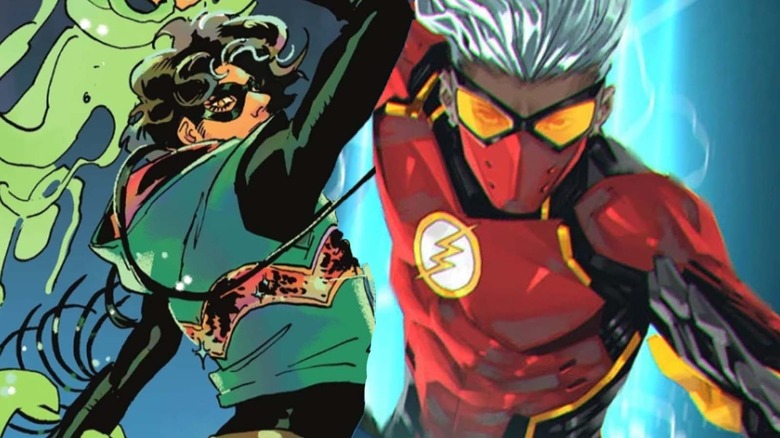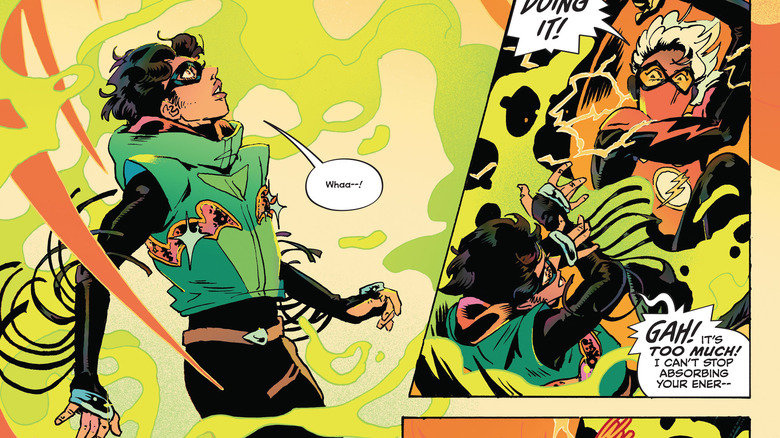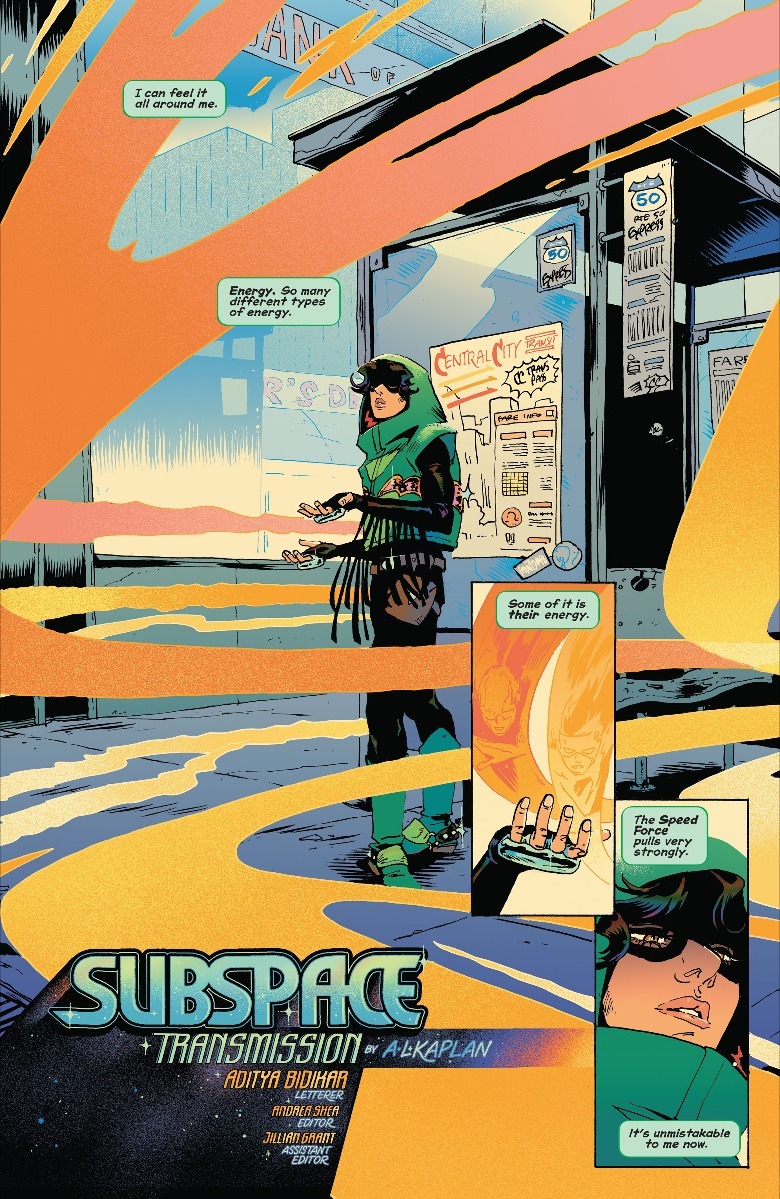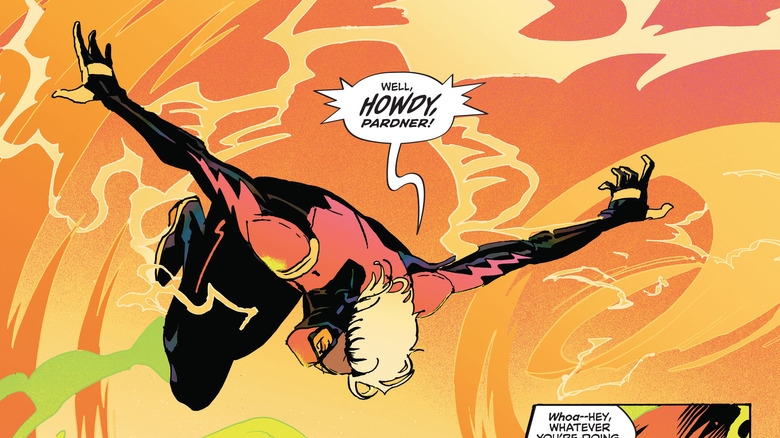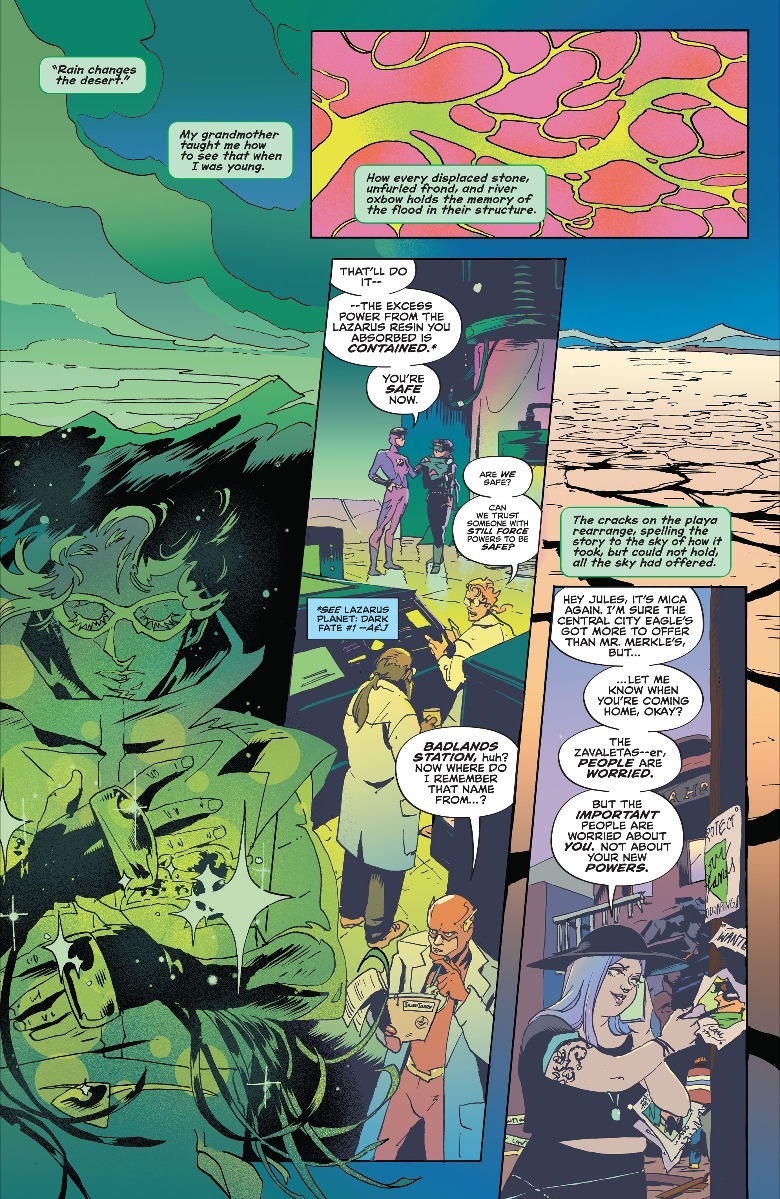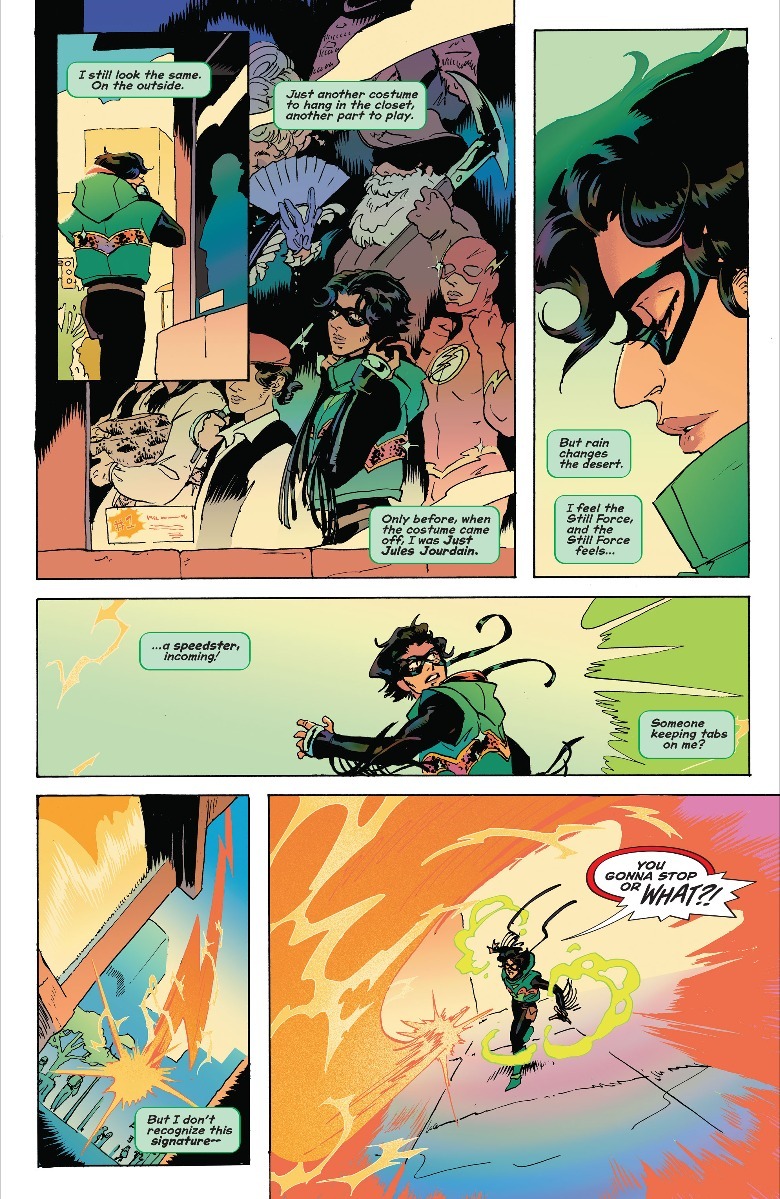The Story Of How AL Kaplan Designed Circuit Breaker, DC's New Transmasculine Hero - Exclusive Interview
DC is celebrating Pride Month in a big way, with its annual anthology showcasing LGBTQIA+ heroes and villains in exciting new stories. "DC Pride 2023" features new tales from Grant Morrison, Christopher Cantwell, Nicole Maines, Skylar Patridge, Rye Hickman, and a handful of other talented creators. The stories star some familiar and newer faces from across the multiverse, including Harley Quinn, Midnighter and Apollo, Ghost-Maker, Flashlight and Red Racer, and more.
In a story from A.L. Kaplan, the transmasculine hero Circuit Breaker and the nonbinary speedster Jess Chambers (the Flash of DC's Future State Justice League team) meet for the first time. The story provides closer looks at the fan-favorite heroes, with their interaction also serving as an important moment for representation in the DC Universe.
We interviewed Kaplan about working on the story starring their original creation Circuit Breaker, the initial reaction to the hero, meeting the Flash from a different timeline, and working on DC's latest "Pride" issue.
On Circuit Breaker's introduction and rising popularity
Where does Circuit Breaker find themselves in this story?
We meet Jules again at a crossroads. He's become Circuit Breaker, wielder of the Still Force powers mythologized in his hometown — by his own hand, as a historical reenactor — as evil. He can't be expecting a warm welcome back, but he's also not being recruited to join this new world of superheroes he's found himself in, either. What's a guy to do? How does he reconcile the life he made for himself back home with the way his new Still Force powers are affecting him?
How exciting has it been to see the reaction to Jules since their debut in "Lazarus Planet: Dark Fate"? I know even I was emotional at seeing people relate to the transmasc hero and their incredible design.
I'm very grateful for how warmly he was received overall. I've never had this large an audience for my work, so it was of course a welcome shock to see all of the fanart and cosplay and general love for the character so far! Trans experience is so varied and diverse; as much love as he gets, I'm sure there are many who don't relate to him. I hope this reception continues to hold the door open for many more trans creators and their stories to be platformed through mainstream comics.
Speaking of the design, how important was it to include details such as the top surgery scars on his costume to show Jules' journey so far?
Comics are a visual storytelling medium. With two 10-page shorts to establish Jules and (hopefully) endear him to the audience, his visuals needed to communicate who he is clearly and memorably. Utilizing the lightning bolt imagery felt like a way to link Circuit Breaker back to Flash-family costume aesthetics, and to relate his backstory as a trans stage and rodeo performer to the reader. Distilling aspects of any identity into easily recognizable visual signifiers is, well, fraught, to say the very least. So, it had to feel specific to the character, not like a generalized depiction of trans masculinity (binary or otherwise).
For instance, the cropped vest has the scar imagery — but it's also contemporary himbo fashion, a bit of a nod to Steadfast (another Still Force user), and reminiscent of a chest binder. It exaggerates the silhouette of his shoulders while showing off his biceps, which says something about the particularities of his masculine expression — especially paired with the decorative spurs, sequins, strap, and of course the tassels. Rodeo, acting, and superheroics all require shades of kayfabe. Jules isn't hiding who he is, and that communicates something about his personality, even if he's just a cameo in a background shot.
For those who don't know, what are Jules' powers?
Jules' connection to the Still Force allows him to decelerate or negate motion and absorb kinetic energy into his body — the latter of which has been shown so excellently through the lettering in both stories, here by Aditya Bidikar. Jules is still learning to understand the Still Force, and having to embody the energy he absorbs limits how much he can potentialize and how long he can hold it. Because of this, he's (unintentionally) used the Still Force to redirect large amounts of kinetic force in both stories.
How Jess Chambers fits into Circuit Breaker's story
What made Jess Chambers the perfect character to star in this story alongside Jules? How do their powers play directly off each other? Artistically, what was it like to draw the Speed Force meeting the Still Force? There's some incredible visual moments.
Thank you! "Subspace Transmission" is a story about Jules reconciling his past with his future, so who better to pop out of the timestream in his time of need than the confident, meddling Jess Chambers — the Flash of the future?
Jess is a Speed Force conduit — a contrast to Jules that I wanted to read in the visuals. Aside from character gesture and staging, using reds, golds, and sharp dynamic lines for the Speed Force allows it to visually clash and play off the softer, languorous greens of Jules' Still Force powers.
How does their personality grow in this new chapter? Jess seems to throw them off in a good way.
The Still Force intrudes on Jules' ability to interface with the world, both physically and perceptually, and he's alone in this struggle. But here comes Jess, bursting with confidence, despite — or because of! — the similar perceptual changes they experienced as a Speed Force conduit. Of course, this story is centered around Jules, but I also enjoyed giving Jess space to reflect on their own powers and experience.
The two heroes appraise the strange new world they land on very differently through the lenses of their respective powers. And understanding that difference ultimately helps Jules reconcile his newfound experiences with his past knowledge to give him the confidence he was lacking.
How fun was it to be part of "DC Pride 2023"? How important is it to tell these stories featuring characters from the LGTBQIA+ community at a time when some real-world actors are trying to effectively erase Pride? How important is it for LGTBQIA+ people to see themselves represented in these stories?
Fiction can be palliative during hard times, so I hope having this dedicated space to read about LGBTQIA+ superheroes will help bring a joyful escape for its audience. Along with depicting queer people in fiction, this anthology also provides a platform for the real queer creatives behind the work to tell their stories in a variety of tones and styles not always normative to mainstream comics. That sort of representation brings a tangible hope to queer readers, too: that, despite the current waves of media and legislative backlash, there is real space to be made for them, their voices, and their experiences, in this industry.
Can we expect to see Jules show up in future DC Universe stories?
This Still Force cowboy hasn't ridden off into the sunset just yet!
What are you most excited about readers getting from this story?
What more can a creator hope than for their character to live [on in] the imagination of the reader after they've finished reading?
Thank you so much to A.L. Kaplan for taking the time to answer Looper's questions! Kaplan's Circuit Breaker- and Jess Chambers-starring story, with lettering by Aditya Bidikar, in "DC Pride 2023" is in comic book stores now!
